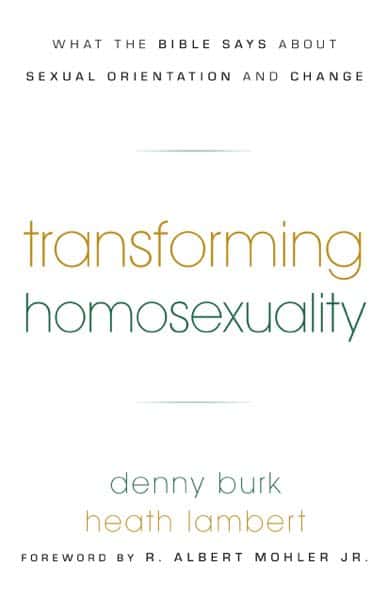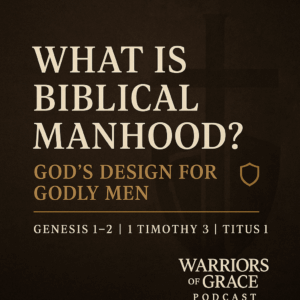⏱️ Estimated Reading Time: 8 min read
[et_pb_section bb_built=”1″][et_pb_row][et_pb_column type=”4_4″][et_pb_button _builder_version=”3.11.1″ button_text=”Biblical Gender and Sexuality: An Expose On Manhood and Womanhood” url_new_window=”on” button_url=”https://servantsofgrace.org/wp-content/uploads/2018/08/BiblicalGenderandSexualityAnExposeontheAuthorityofScripture.pdf” /][et_pb_text _builder_version=”3.11.1″]
Few issues are as controversial as the topic of homosexuality in our day. Within the past several years, in large part due to a decision by the United States Supreme Court on gay marriage, the number of books coming out on gay marriage has significantly increased. With this has come more conversation, articles, books, and magazine issues devoted to the conversation around what the Bible teaches about homosexuality and biblical sexuality.
One book to join this conversation is Transforming Homosexuality: What the Bible Says about Sexual Orientation and Change, by Drs. Burk and Lambert. This book seeks to look at the question, “Is same-sex attraction sinful, even if it’s not acted on?” Answers to this question have ranged widely, as has answers to the question, “What does it mean for homosexuality to be transformed?” In this book, Drs. Burk and Lambert challenge misconceptions on all sides, as they present biblical answers on sexual orientation and change, so our hope and confidence will rest on Christ.
The book has two parts with five total chapters. In part one, consisting of two chapters, the authors look at the question, “What is the same-sex attraction?” and “Is same-sex attraction sinful?” Part two has three chapters and looks at the myths about change, a biblical path to change, and how evangelicals can change.
The authors in the preface clarify their purpose for this book when they explain:
“Our purpose is not to consider again, the ethics of homosexual behavior, but to consider the ethics of homosexual desire, often referred to as homosexual orientation. Faithful Christians are united in their rejection of homosexual behavior. However, there is not as much clarity when it comes to issues of orientation or same-sex attraction. The goal of our work in this book is to establish from Scripture that desires for a sinful act are sinful precisely because the desired at is sinful. We will carefully define same-sex attraction and show from the Bible why it is sinful” (13).
They note, “Biblical change means transformation into the image of Christ. What the Bible commands, therefore, is not heterosexuality, but holiness” (14).
In chapter one, the authors consider four approaches to same-sex attraction and behavior. The first is the liberal view, the second is the revisionist approach, the third is neo-traditional, and the final is the traditional viewpoint. The traditional view is the one the authors agree with. They explain this viewpoint when they note, “Our view is the one of historic Christianity, which sees both homosexual behavior and homosexual desires as sinful” (26). They expound on this when they state, “When we say that ours is the traditional view grounded in classical Christianity, we mean that ours is the biblically consistent way to apply a Christian understanding of human sinfulness and human nature to this contemporary discussion of homosexual desires and behavior” (38).
In chapter two the authors consider “whether the Bible’s teaching about temptation, sin, and desire maps onto the experience of same-sex attraction” (40). They note that here that we are discussing “an issue with immediate practical and pastoral implications. How we answer these questions has a profound impact on how we invite our gay and lesbian neighbors to come to Christ. Our answer will also define how same-sex-attracted brothers and sisters pursue a faithful walk with Christ. We would also argue that our answer informs how opposite-sex-attracted brothers and sisters should pursue a faithful walk with Christ” (41). They clarify:
“The only sex desires that glorifies God is that desire that is ordered to the covenant of marriage. When sexual desire or attraction fixes on any kind of non-marital erotic activity, it falls short of the glory of God and is, by definition, sinful. Again this principle applies to every one of our desires, including opposite-sex and same sex desire. The difference is that opposite-sex desire may have the covenant of marriage as its end or it may not, but same-sex desire can never have the covenant of marriage as its end” (48).
They also teach:
“Does your church and your home have arms wide open to them to come alongside of them, to receive them, and to strengthen them? Jesus said that the world would know us by our love for one another? (John 13:35). One of the ways that we show love for one another is by bearing one another’s burdens (Galatians 6:2). Can you bear this burden with your brothers and sisters who are in this fight? Are you ready to offer help and encouragement to these saints for whom Christ died? If not, then something is deeply amiss. For Jesus has loved us to the uttermost, and he calls us to do the same” (60).
Part two opens with considering myths about change in chapter three. Here the authors look at five myths related to change: first, an understanding of biblical ethics leads to biblical change; second, change is impossible, change is harmful, and change requires homosexual desire; and finally, change happens without real repentance. The authors engage these remarks head-on with biblical faithfulness. They explain, “The only way any person can have any change from any sin—whether homosexuality or anything else is—by repentance” (80).
Chapter four looks at a biblical way to change. Here they look at paths of repentance in Ephesians 5:1-2. In this chapter, they explain that “every time we desire to act out a sexuality that undercuts a biblical ethic, we are engaging in an act of hate” (84). On the point of same-sex attraction they note:
“The effort to defend the sinlessness of homosexual orientation is well intended. The motivation seems to be to provide compassion to same-sex attracted men and women. The compassionate motive is to create a space in their desires that is not dirty, sinful, and guilty. The impulse here is to offer good news that you’re not as bad as you have been told you are. Singling out same-sex attracted people as especially sinful undersells the deep sinfulness that marks all of us. But in another sense, it is not true. It does not help anyone to give sinners the impression that their sin is not sin. This is not the kind of good news that the Bible ever offers to anyone with any sin struggle. In fact, it is at odds with the Christian gospel. Christians have never tried to help sinners by providing false assurance that sin is not as bad as they have believed. They instead have pointed to a Savior who offers forgiveness more amazing than we can fathom. The truth is that persons with same-sex attraction, like all of us, are more sinful than they have been told. Humbly confessing this reality is the only way to experience the full saving love of Jesus Christ. This is the good news of the love of Jesus Christ that sets sinners free and gives them his own resources to love the way he does” (88).
This is why they move to explain in the rest of the rest of this chapter how to repent of covetousness and pursue gratitude, along with repenting of presumption and pursuing discipleship. They also explore repenting of sinful concealing and pursuing open accountability, repenting of cold hearts and pursue singing to Jesus, and how the gospel changes people.
The final chapter of the book challenges evangelicals to teach what the Bible teaches, to proclaim the gospel, to speak humbly and in love by being a friend, listening, being compassionate, sharing the gospel, speaking the truth, being candid about differences, opposing bullying, receiving your brothers and sisters, strengthen your brothers and sisters, and praying.
Transforming Homosexuality is a useful book that will help readers to understand the issues related to same-sex attraction. This book does an excellent job of examining the pertinent biblical problems along with their ethical implications in our lives.
Whether you are actively engaged in writing or speaking about sexual sin, or you know someone who is wrestling with homosexual desires and earnestly want to help them Transforming Homosexuality is the book for you. I highly recommend this clear, compassionate, and thought-provoking book, and believe every pastor and Christian seeking to minister to those with same-sex attraction should read, digest, and apply the teaching in this book to their thought and ministries.
[/et_pb_text][/et_pb_column][/et_pb_row][/et_pb_section]



